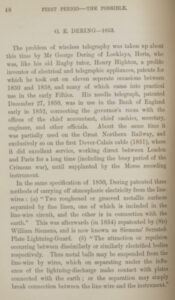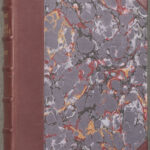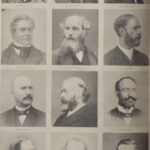 Published: New York, Edinburgh, and London, 1899
Published: New York, Edinburgh, and London, 1899
The term “wireless telegraphy” conveys more than just its single, literal meaning. Although it describes a tremendous leap forward in communication technology, it’s a phrase – not unlike “horseless carriage” – that can’t quite leave the past behind.
The Morse telegraph had transformed human communication in the mid-19th century by making it possible, for the first time, for humans to communicate instantly across long distances, via signals traveling between two points connected by wire. Telegraphy marked an unprecedented break with the past: information could now be transmitted from one place to another, day or night, more quickly than a train could carry it.
But in the later years of the century, as the dream of telecommunication in the absence of a direct wire connection was beginning to come true, the vision was still tied to the Morse code telegraphic model. In practice, the technology that was being developed to enable “wireless telegraphy” would eventually come to be called radio communication and result finally in broadcasting, which would itself lead to technologies that were unimaginable when this book was published.
The revolution was still in its relative infancy when J.J. Fahie set out to praise the achievements of the illustrious “Arch-builders of Wireless Telegraphy,” whose portraits (including one of Marconi) appear on the frontispiece.

But six pages of the volume are devoted to a much less famous individual: George Edward Dering (1831-1911). In Fahie’s words, Dering was “a prolific inventor of electric and telegraphic appliances, patents for which he took out on eleven separate occasions … and many of which came into practical use in the Fifties.” Dering, a British gentleman, was indeed brilliant; his contributions to telegraphy were valuable and were widely applied. He was also well-to-do, reclusive, and highly eccentric. In the only existing photographs of Dering, he is perched on a tightrope.
The MIT Libraries have a particular interest in Dering, for he was insatiably curious about electricity and associated topics. That curiosity led him to assemble — with the help of booksellers all over England and Europe — the massive library of books on electricity, electrical engineering, magnetism, and allied sciences that came to Massachusetts upon his death, and is now known as MIT’s Vail Collection.


